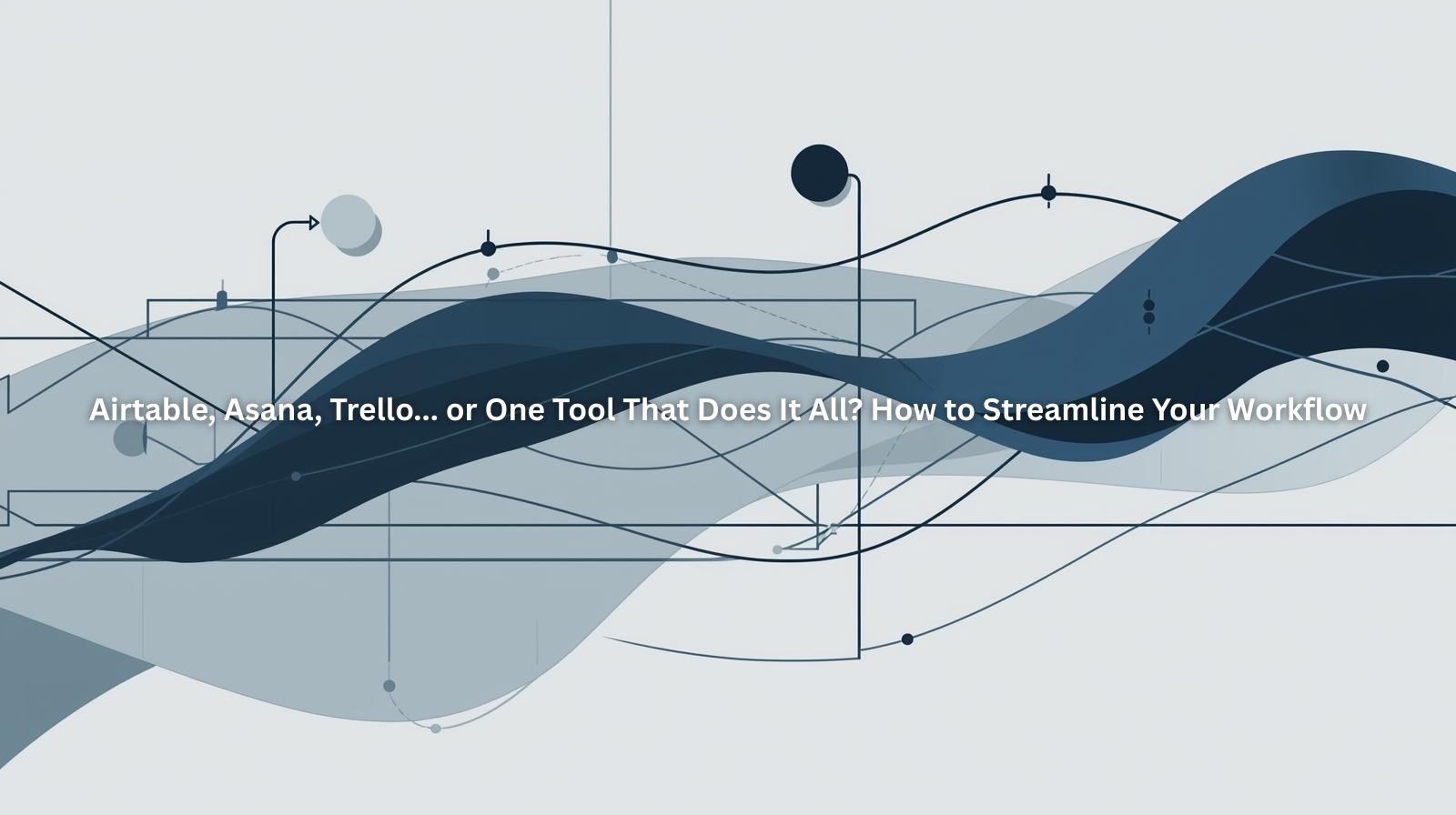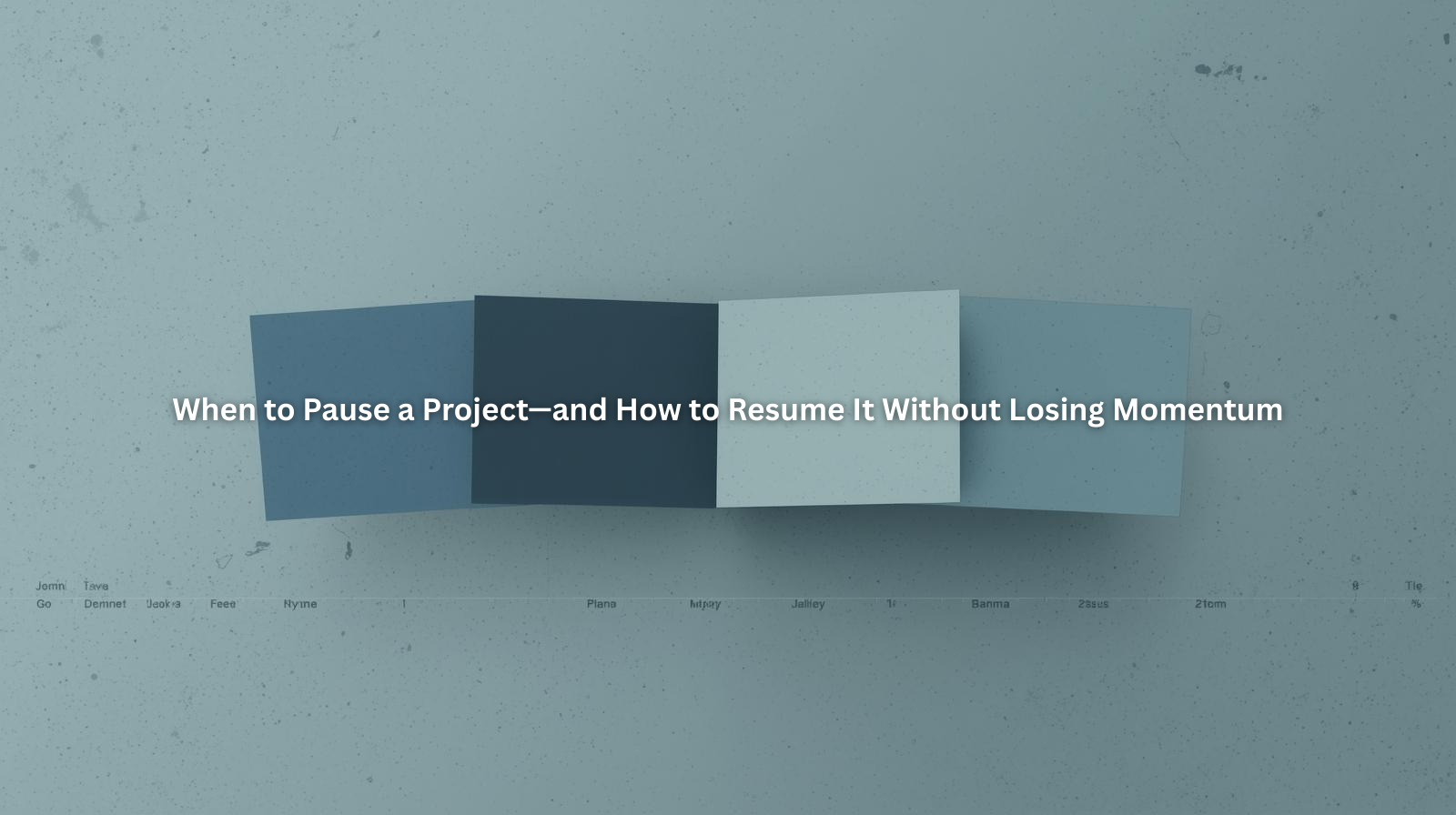Using Phases to Structure Client Work (So It Doesn’t Spiral Out of Control)

Table of Contents
- Why Structure Matters in Freelance Projects
- What Happens When You Skip Phases
- What Is a Project Phase?
- Simple Phase Examples for Common Freelance Projects
- How Phases Help You (and Your Clients) Stay Aligned
- Tips for Introducing a Phased Approach to Clients
- How ProjectBook.co Helps You Build a Phased Workflow
- FAQ: Using Phases in Freelance Projects
1. Why Structure Matters in Freelance Projects
As a freelancer, it’s easy to fall into the trap of thinking flexibility equals great client service. After all, you want to say yes, be helpful, and adapt to each client’s needs. But too much flexibility—without a clear underlying structure—leads to confusion, delays, and burnout.
Without a simple framework to guide your process, projects can quickly become overwhelming. Timelines drift, expectations get misaligned, and before you know it, you’re juggling a project that feels like it will never end. Structure isn’t about being rigid. It’s about providing clarity so both you and your client can move through the project with shared understanding and mutual confidence.
One of the most effective ways to add that clarity is to break your projects into phases—logical segments that define what’s happening now, what’s coming next, and when you’ll both pause to review and realign.
.png)
2. What Happens When You Skip Phases
If you’ve ever started a project with a vague “let’s just get going” and ended up with late-night emails, shifting scope, and endless revisions, you’ve already felt what happens when there’s no phase structure in place.
Without phases, the project unfolds chaotically. There’s no clear sense of what’s done and what’s still in motion. Files arrive at random times, client feedback lacks context, and the scope of the work subtly expands with every new request. You may also find that clients expect faster turnaround because there wasn’t a mutual understanding of when each part of the work would happen—or what approvals would be needed before moving forward.
This often leads to exhaustion on your side and frustration on the client’s. No one is quite sure when the project is officially “done,” and both parties feel like they’re spinning in circles.
3. What Is a Project Phase?
At its core, a project phase is simply a defined portion of your project that has a clear purpose and outcome. Think of it as a chapter in the story of your project—each phase moves the narrative forward in a way both you and your client can track.
A phase typically includes a goal (what you’re trying to accomplish during this part of the work), a set of deliverables or tasks that support that goal, and a milestone or decision point where you and your client review progress and confirm readiness to move to the next phase.
You don’t need to over-engineer this. Even dividing a project into three to five simple phases can dramatically improve clarity and flow. And it signals to your client that you have a thoughtful process in place, which builds trust and positions you as a professional—not just a vendor reacting to emails.
4. Simple Phase Examples for Common Freelance Projects
Let’s bring this idea to life with a few examples.
If you’re a freelance designer working on a website, your phases might include discovery and strategy, concept development, client feedback and revisions, final production, and launch. Each phase builds on the last, and each one gives your client a moment to review and approve the work before moving forward.
If you’re a copywriter, you might structure your process into research and briefing, first draft, client feedback and edits, final draft and delivery, and perhaps a content handoff phase if you’re providing additional guidance.
Even for ongoing work, such as a monthly retainer, phases help provide rhythm. You might start each month with a planning phase, move into creation and execution, allow for client review and revision, and then wrap up with a retrospective or planning session for the next month.
No matter what kind of work you do, the key is simply to create a sense of order—a beginning, middle, and end—so the project doesn’t feel like an open-ended free-for-all.
5. How Phases Help You (and Your Clients) Stay Aligned
Using phases benefits both sides of the client relationship.
For you, it makes it much easier to plan your time and manage capacity across multiple projects. It creates natural pause points where you can check alignment with your client and confirm that you’re still on track. It also protects you from endless scope creep, because each phase provides a logical place to revisit and reset expectations before proceeding.
For your client, phases make the entire process feel more transparent and professional. They know where they are in the project, when their input is needed, and what’s coming next. This reduces anxiety and prevents the common client misconception that everything is happening all at once or that you’re endlessly available for last-minute changes.
Clients appreciate clarity. When you provide it through a phased approach, they trust your process more—and they’re much more likely to respect your boundaries and your time.
6. Tips for Introducing a Phased Approach to Clients
If you haven’t used phases before, introducing this concept to your clients is usually easier than you think—most will welcome the added clarity. The key is to explain it in friendly, non-technical language and position it as something that makes their experience better.
You can start by including your phased process in your proposals or onboarding materials, so clients know what to expect from the beginning. A simple explanation like, “We’ll move through the project in five clear phases to keep everything on track and ensure you always know what’s happening” can go a long way.
During the project, be consistent about using this language. When clients ask about timing or new requests, reference the current phase and what’s coming next. This reinforces the structure and helps clients see that you’re leading them through a thoughtful process—not reacting to every request in real time.

7. How ProjectBook.co Helps You Build a Phased Workflow
One of the reasons we designed ProjectBook.co the way we did is because so many freelancers struggle with structuring projects. You may start with the best intentions, but without the right tools, it’s hard to keep phases organized and visible across your project work.
ProjectBook makes this easy. You can visually map out project phases in Timeline View, link tasks and deliverables to each phase, and set milestones to mark key decision points. When something is waiting on client input, you can flag it clearly—so nothing gets lost in a sea of emails or sticky notes.
You can also reuse phased templates for repeat projects, saving time and helping you build a more scalable, consistent workflow over time. Whether you’re managing one complex project or juggling multiple clients, having this level of structure makes everything feel more manageable—and more professional.
8. FAQ: Using Phases in Freelance Projects
How many phases should I use?
Start simple. For most projects, three to five phases are more than enough to provide structure without overwhelming the process.
What if my client doesn’t want to follow a phased process?
In most cases, clients appreciate the clarity. Frame it as a benefit for them—it helps them know what to expect and ensures their project moves forward smoothly.
Can I use phases for ongoing work, like retainers?
Absolutely. In fact, adding phases to retainer work can help provide rhythm and boundaries, making it easier for both you and your client to plan and manage expectations month to month.
Do I need a project management tool to implement this?
Technically, no—but having a tool like ProjectBook that makes phases visual and easy to manage will save you a lot of time and help keep things organized as your business grows.
Final Word
Structuring your client work into clear phases is one of the simplest, most effective ways to prevent projects from spiraling out of control. It helps you plan your time, set and protect boundaries, and deliver a more professional, seamless experience for your clients.
You don’t need to over-engineer it. Just start by breaking your projects into logical chunks, communicating those phases clearly, and using a tool like ProjectBook.co to keep everything visible and on track. Your clients will thank you—and your future self will too.


